Plenty of folks are starting to look toward the new year, and I’m getting a lot of questions about my outlook for high-yield closed-end funds (CEFs) for the rest of 2022 and into 2023.
Of course, no one has a crystal ball when it comes to CEFs, stocks or the economy in the short run, but my take is that we’ll likely see continued volatility in the back end of 2022, with better conditions in 2023, as the so-called “terminal rate” of the Fed’s hiking cycle comes into view.
Luckily, there are CEFs out there called covered-call funds that are purpose-built for this environment, handing us safe 7%+ dividends that actually get stronger when volatility picks up. I’ll share a ticker with you that’s paying 7.7% now in a moment.
This is a particularly good time to get into these funds, which use a unique option strategy to increase their dividend payouts when volatility rises. And with fear running as high as it is, we can safely say that more volatility is on its way—take a look at the latest read of the closely followed CNN Fear & Greed Index:
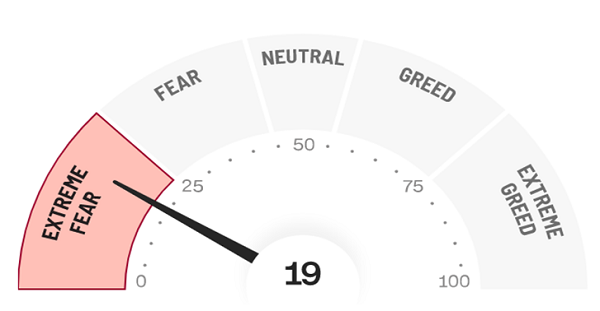
Source: CNN
This sets up a perfect two-step plan for us: buy covered-call funds like the one below now and then shift into “pure” equity-focused CEFs when things calm down (as covered-call funds tend to underperform in a rising market) in 2023.
Why do I see the market returning to health next year? Because there are many good-news stories that have yet to break through the gloomy mood out there. They include:
1. Low Unemployment
The best news about the US economy is that Americans are having no problem getting work, with unemployment at a decade low.
Job Market Hangs Tough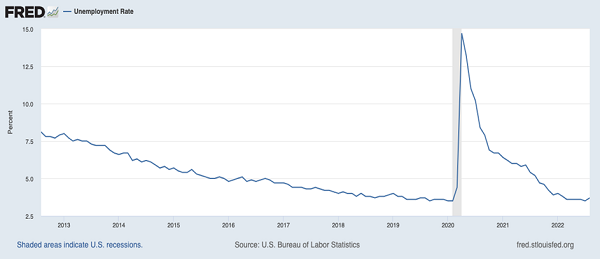
This has also meant that Americans are earning more than ever, with average weekly earnings hitting an all-time high in 2022 and growing at a faster pace than they have in decades.
Incomes Rising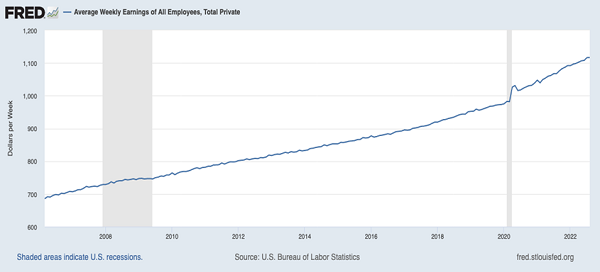
2. Profits Remain Strong
The way you normally hear it, prices are soaring because costs are spiking as businesses are forced to pay higher wages, as well as higher costs for raw materials. That could give you the impression that profits are suffering—but they’re not.
Corporate Profits Soar With Inflation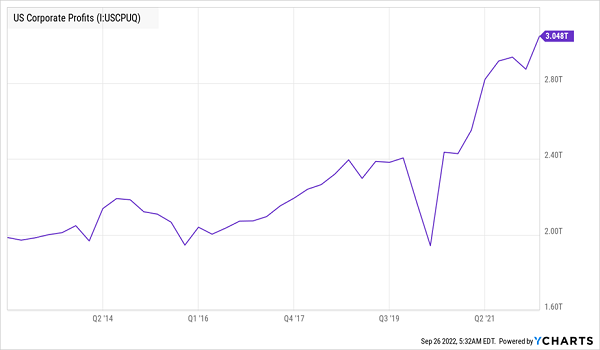
Higher profits largely stem from the broad base of consumers who, thanks to rising income and lower unemployment, now have money to spend. And American firms continue to earn strong profits as a result.
3. The Fed Is Likely Near the End of Its Rate-Hike Cycle
Let’s be honest, markets are mainly tanking right now because of the Federal Reserve. With the Fed now hinting that interest rates could be hiked into February (previously, they expected hikes to end in December), there’s now fear that rates will rise higher and stay high for longer. But the numbers are starting to tell a different story.
The First Sign the Fed Might Back Off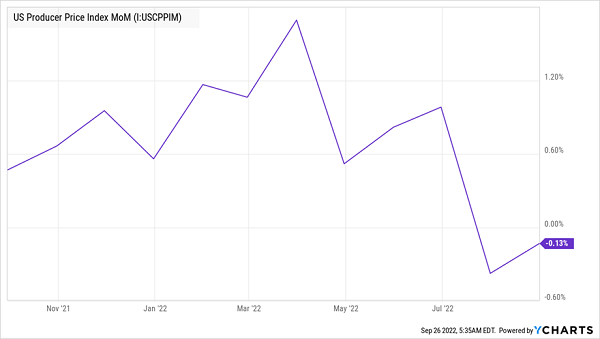
In August, for example, the US producer price index fell on a month-over-month basis, which hasn’t happened since the start of the pandemic. These are the costs companies bear when producing goods and services: a decline usually means two things are about to happen: higher profits (as inputs are getting cheaper while the market is tolerating the prices these firms are charging) and lower inflation (a decline in costs means companies can increase their profits without raising prices).
While it’s early days, there is a clear hint that inflation could start falling quickly over the next few months, which could mean the Fed has less reason to keep raising rates into 2023, as the market currently expects.
Volatility Now, Recovery Later
In a market like this, our best move is to protect ourselves from short-term downside while getting exposure to longer-term upside, thanks to today’s cheap stock prices. And as I mentioned earlier, a covered-call CEF like the Nuveen S&P 500 Dynamic Overwrite Fund (NYSE:SPXX) is tailor-made to do that.
Buy SPXX and you get three things:
- Exposure to the S&P 500 in its entirety, including top constituents like Apple (NASDAQ:AAPL), Microsoft (NASDAQ:MSFT) and Visa (NYSE:V), so when stocks start to recover, your portfolio will rise, too.
- A reliable 7.7% income stream, thanks to the covered calls SPXX sells (the fund collects money from the option sales it makes on its portfolio, whether or not the trades actually complete). This strategy does well when volatility picks up, making the fund’s income stream even more reliable in turbulent times.
- “Insurance” from downside, thanks to those covered calls: higher volatility increases the value of SPXX’s covered calls, helping cushion its per-share portfolio value.
If the market is going back to the slow recovery from capitulation we saw in the summer, the next few months of uncertainty could mean superior profits for SPXX while we wait for brighter days to come. We’ll collect its 7.7% dividend while we do.
SPXX Is a Great CEF, But …
SPXX is a cornerstone CEF for many folks: because it holds the stocks in the S&P 500, it acts like an index fund, but with a much higher dividend and lower volatility than the SPDR S&P 500 ETF Trust (NYSE:SPY), the index fund pretty well everyone holds.
Therein lies my only reservation when it comes to buying SPXX now: it’s popular, trading at a 5.5% premium to net asset value (NAV), so investors are actually willing to pay more than it’s worth.
That’s not the only thing working against SPXX: the other is its lack of an active manager, which we demand, especially these days, to steer us away from trouble and into the best bargains from the selloff. SPXX, which is essentially bolted to the S&P 500 index, just can’t do that.
We need to do better. And we easily can with a 5-CEF “mini-portfolio” I’m urging ALL investors to buy now.
Together, these 5 overlooked income plays yield 8.5%. Even better, they trade at such deep discounts to NAV that I’m calling for 20% average price upside in the next 12 months! Even if volatility persists, these funds’ deep discounts will help them hold their own—and we’ll still collect their outsized dividends.
Disclosure: Brett Owens and Michael Foster are contrarian income investors who look for undervalued stocks/funds across the U.S. markets. Click here to learn how to profit from their strategies in the latest report, "7 Great Dividend Growth Stocks for a Secure Retirement."
